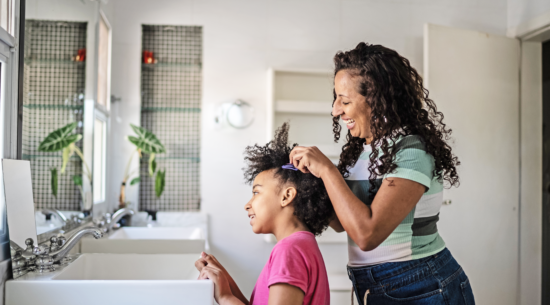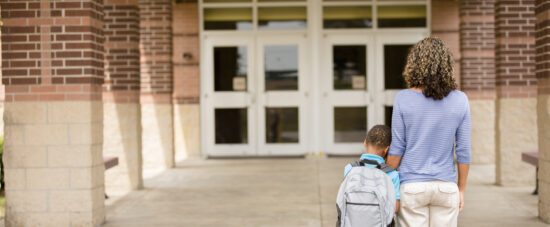Starting school, or any other type of child care program, is a big milestone for both children and parents. It’s the beginning of a new chapter in a child’s life filled with growth, learning, and socialization outside of the family environment.
However, for many little ones, the experience of being separated from their family can bring up feelings of fear and anxiety. Known as separation anxiety, this is a common thing that happens when children are apart from their primary caregivers for the first time.
Keep reading to explore the data surrounding separation anxiety and learn some strategies for easing your child’s transition and helping them feel more comfortable in their new environment.
Separation anxiety in young children: the statistics.
Separation anxiety is a normal part of development that typically emerges between the ages of 8 months to 2 years old. It involves feelings of distress or fear when a child is separated from their primary caregiver.
While mild forms of separation anxiety in young children are common, they are often fleeting. With proper support and guidance, most children outgrow it as they become used to having new experiences in new environments. That being said, around 4-5% of children will experience separation anxiety disorder, a more persistent form of the condition.
Research has shown that separation anxiety tends to peak around 15 months of age. Children can become clingy or upset when away from their primary caregiver, showing behaviors like crying, tantrums, or physical resistance.
To summarize, while separation anxiety can be challenging for both children and parents, it’s a natural part of development and doesn’t always indicate long-term emotional or psychological issues.
Easing separation anxiety in young children.
Transitioning to childcare can be a difficult experience for some children. As experts in child development, Childcare Network is here to provide you with several strategies parents and caregivers can use to help ease separation anxiety in young children:
Practice being apart before the real thing.
In the weeks before your little one’s big day, begin introducing short periods of separation. You can leave them with a trusted caregiver or family member for small amounts of time, increasing the time they are left with the other party each time.
This can help your child get used to being away from you and build confidence and coping skills during temporary separation.
Visit the child care center together first.
If your child will be attending a child care center, Montessori school, or similar facility, visit them together first. Take them on a tour of the facility, meet their teachers, and lead them on an exploration of their classroom and play areas.
While you’re there, encourage your child to ask questions, express their feelings, and give them as much reassurance as possible that they will be taken care of if needed.

Come visit the classroom or volunteer when possible.
Many schools and child care centers offer extra opportunities for parents to participate in their child’s daily life—this includes volunteering, special events, PTAs, “bring your parent to school” days, and much more. When you’re touring a school during the decision-making process, it would be wise to inquire about these types of opportunities.
Seeing you in your child’s school environment can reinforce the idea that they are in a safe place. You can also get a glimpse of your child’s behaviors, the relationships they’ve built, and an idea of what they spend their time doing when at school.
Create calming exercises and rituals.
Develop calming exercises or rituals to help the child relax when they are feeling anxious. These can be as simple as a special goodbye routine that soothes them or as complex as teaching them deep breathing exercises or visualization techniques.
For the best results, encourage your little one to practice these exercises anytime they are feeling overwhelmed or stressed, not just when they experience feelings of separation anxiety.
Explain to them in detail what is happening.
Young children tend to respond to predictable routines, so preparing them for the change of starting school can be as simple as sitting them down and talking them through what will happen. Explain their new routine in detail, including drop-off and pick-up times, daily activities, and who will be taking care of them.
You can even use language and visual aids, like calendars or picture schedules, to aid their understanding. Along the way, ask them if they have any questions, and make sure they know that you will always come back to pick them up at the end of the day.
Provide comfort through it all.
Above all, reassurance and comfort are of the utmost importance during the transition period. Your child trusts you and is fairly unfamiliar with the world around them, so offer words of encouragement, hugs, and affectionate gestures to let them know that they are loved and supported.
Be patient and understanding, acknowledging their feelings while gently encouraging them to participate in new experiences.
Childcare Network understands separation anxiety.
At Childcare Network, we understand the challenges of separation anxiety and the importance of providing a supportive environment for children and families. Our teachers are trained to recognize and address separation anxiety in young children, offering reassurance, comfort, and guidance to help ease the transition to childcare.
Let us help you and your child navigate this exciting new chapter with confidence and peace of mind. Together, we can ensure a smooth transition and a positive start to your child’s educational journey. Ready to come pay us a visit? Find a Childcare Network location near you and schedule a tour today!

